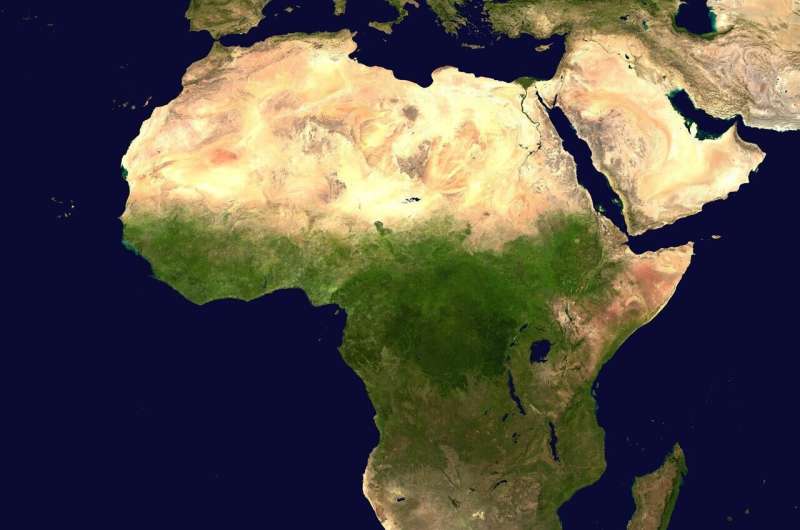March 12, 2024 report
This article has been reviewed according to Science X's editorial process and policies. Editors have highlighted the following attributes while ensuring the content's credibility:
fact-checked
peer-reviewed publication
trusted source
proofread
Migration of hominins out of Africa may have been driven by the first major glaciation of the Pleistocene

A pair of planetary scientists, one with the University of Milan, the other with Columbia University, has found evidence that the exodus of hominins out of Africa approximately 1 million years ago may have been driven by the first major glaciation of the Pleistocene.
In their study, reported in Proceedings of the National Academy of Sciences, Giovanni Muttonia and Dennis Kent more accurately dated the onset of the first major Pleistocene ice age and compared it with genetic evidence of a hominin population bottleneck described in prior research efforts.
Prior research has shown that a major migration of hominins out of Africa occurred sometime between 1.1 and 0.9 million years ago. Research has also suggested that there was a hominin population bottleneck (drop in numbers) roughly around the same time that triggered the migration. In this new study, the researchers sought to better explain the timing and reason for the migration.
The team began by studying shifts in oxygen isotopes (found in rock sediment layers), which allowed them to see that the first major Pleistocene began approximately 900,000 years ago. They turned their attention to the results of prior studies that showed a population bottleneck approximately 200,000 years earlier. In that work, the team found that the results were not reliable—it is possible, they note, that population numbers were higher but there were areas where they were not being counted.
They then pointed out that evidence in past research showed hominin habitation all across Eurasia started approximately 900,000 years ago, which coincides with the onset of the first Pleistocene ice age. As the ice age began, ocean levels would have dropped, allowing hominins an easier route from Africa. Also, conditions in Africa would have become more difficult for the hominins living there, making migration a tempting proposition. And the researchers note that many animals also began migrating out of Africa around the same time.
The team suggests that the true reason for the migration was climate change—and it happened approximately 0.9 million years ago.
More information: Giovanni Muttoni et al, Hominin population bottleneck coincided with migration from Africa during the Early Pleistocene ice age transition, Proceedings of the National Academy of Sciences (2024). DOI: 10.1073/pnas.2318903121
Journal information: Proceedings of the National Academy of Sciences
© 2024 Science X Network



















